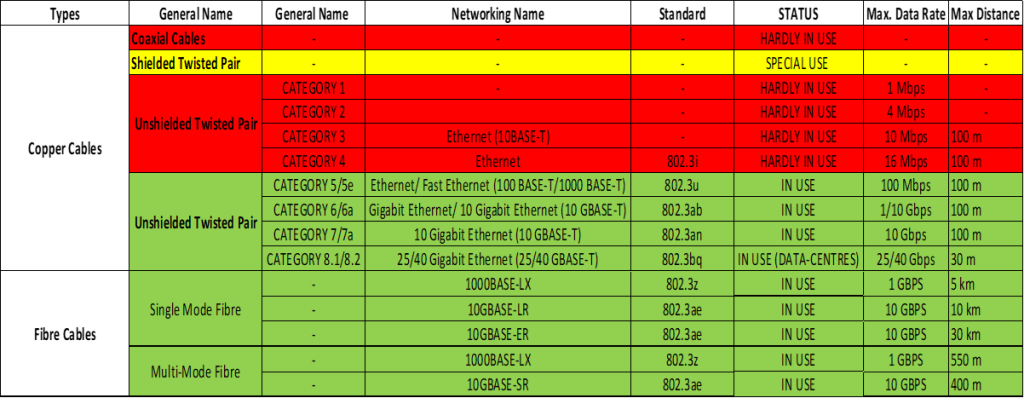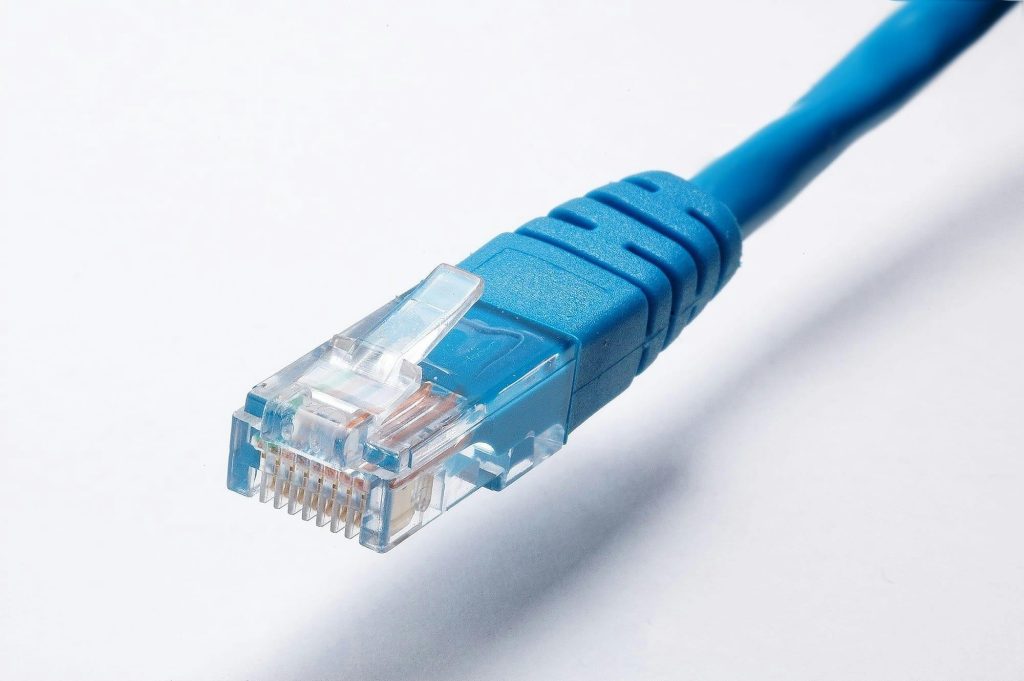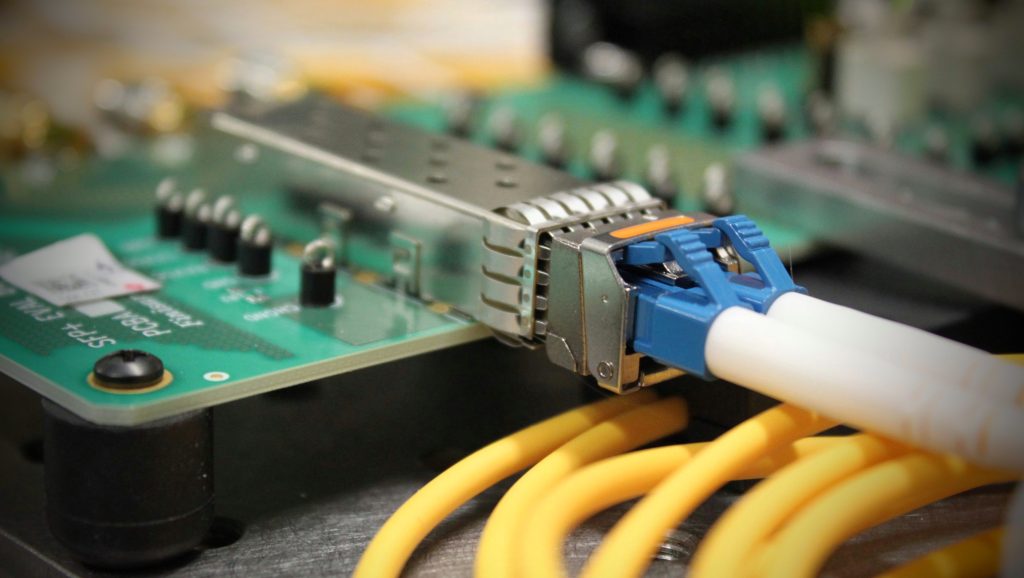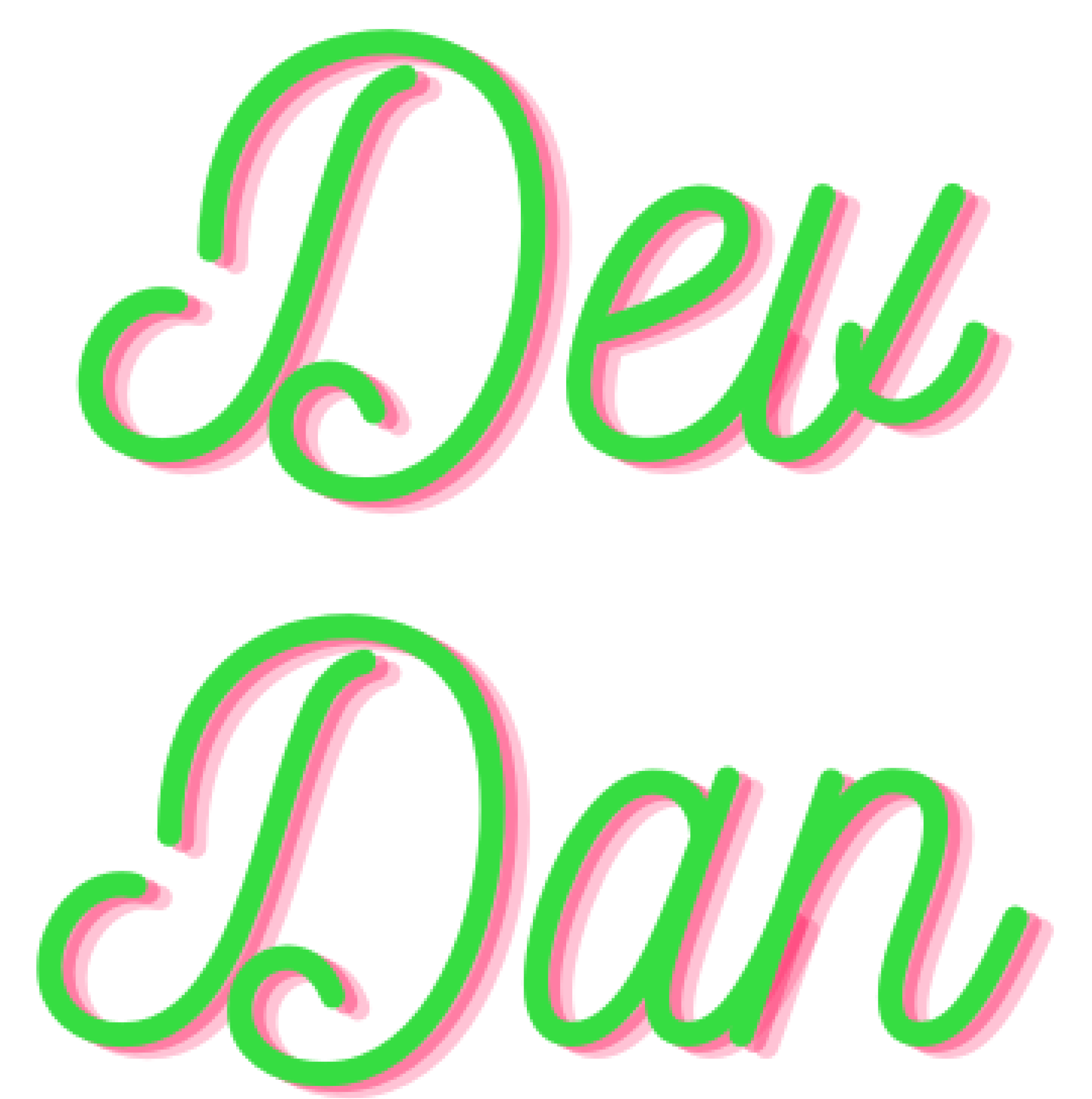The focus of this topic is single-mode fiber, multimode fiber, copper cables and their connectors. Remember that in networking, we are specifically referring to “enterprise networking”, hence you should know that making money …. or saving money is the goal. This means efficient business operations and planning.
When comparing between physical interface and cabling types, we are invariable dealing with one framework, two physical cabling types and two physical interface types. We will be discussing Ethernet as the “framework”, “copper/fiber” as the physical cabling types and “RJ45/Small form factor pluggable” connectors.
Why Standards
History shows what happens without shared rules. Two known examples are Apple Talks and Apple Type C USB. AppleTalk, launched in 1985, was clever, easy to use, and truly plug-and-play, Apple proprietary Macintosh computers could automatically assign addresses, update names, and even handle routing without a central server. It spread beyond Apple’s ecosystem, appearing on IBM PCs, the Apple IIGS, printers, file servers, and some routers. For a while it made networking almost effortless, but it was proprietary, and once the industry rallied around TCP/IP and Ethernet in the 1990s, AppleTalk couldn’t keep up. These open standards scaled better across mixed environments, so AppleTalk slowly faded, finally disappearing with Mac OS X 10.6 in 2009. Now, translate that to networking and the stakes are far higher.
The second clear example of the power of standards is the decision by the European Union (EU) requiring Apple to adopt the universal USB-C charging port. Prior to this, Apple, like many other device manufacturers, could pursue its own proprietary designs, often claiming superior efficiency or innovation. Let’s assume that every company in the world had continued down this path, the result would likely have been a fragmented ecosystem in which, for instance, only Apple devices could call with other Apple devices, or Samsung phones could call solely within the Samsung ecosystem.
Avoiding this kind of inter-operability issues was the purpose of introducing the 802.3 standards in networking. These standards define the choice of cables and connectors used in networking devices globally. Without universal frameworks like IEEE 802 (for LANs and WLANs), each vendor would implement incompatible media, frames, and signaling. Your Juniper router wouldn’t link to a Cisco switch, campus networks couldn’t join service-provider backbones, and regions like Europe, the United States, and Africa would struggle to interconnect. The internet’s explosive growth, new protocols, global reach, and cross-industry value; rests on these shared specifications. Standards are the invisible glue that makes global, borderless connectivity possible.
Standards For Network Cabling Types (Ethernet 802.3)
In modern networking, there are only two types of cables, but each has what I (emphasis on “I”) can describe as sub-types. They are
- Copper Cables
- Coaxial Cables
- Shielded Twisted Pair
- Unshielded Twisted Pair
- Fibre Cables
- Single Mode Fibre
- Multi-Mode Fibre

For best referencing and information for the above, please go to Jeremy IT Lab – Interfaces and Cables and Connections Ethernet shared media and point to point – CCNA,
However, we will give a brief description and knowledge base on the image above
- Category 5/5e (802.3u): Category 5 was the workhorse of enterprise and residential networking through the late 1990s and 2000s. Supporting Fast Ethernet , it enabled the rise of broadband internet, office LANs, and small-scale data networks. However today, Cat 5e is still found in many office buildings, small businesses, and homes. It supports 1 Gbps speeds and it remains “good enough” for everyday internet access, VoIP phones, and Wi-Fi access points, but most new installations now favor higher categories. Assuming a new deployment was being performed, it would be unwise to use the CAT 5 or 5e cables in 2025.
- Category 6/6a (802.3ab): Category 6 and 6a cabling became the backbone of modern office and campus networks. Cat 6 is widely used for Gigabit Ethernet to desktops, while Cat 6a is the standard choice for 10GBASE-T in enterprise wiring closets and server rooms. Schools, hospitals, and corporate offices typically deploy Cat 6a to ensure long-term viability incase they need to deploy newer routers and switches, they can skip re-cabling the enterprise. In data centers, Cat 6a provides a cost-effective alternative to fibre for short-to-medium runs, particularly in structured cabling between switches and patch panels.
- Category 7/7a (802.3an): Category 7 and 7a are niche but important for environments where electromagnetic interference is a real challenge. With full shielding around every pair and an outer shield, they are used in mission-critical sites such as industrial control systems.
- Category 8.1/8.2 (802.3bq): Category 8 is highly specialized and designed almost exclusively for data centers. With support for 25/40GBASE-T, it connects top-of-rack switches to servers or between switches over very short distances. Cloud providers and hyperscale data centers may deploy Cat 8 in specific zones where copper is still favored for cost and backward compatibility with RJ-45. However, because of its 30-meter distance limit, fibre generally dominates large-scale deployments.
- Single-Mode Fibre (802.3z, 802.3ae): Single-mode fibre is the technology of choice for wide-area networks, long campus backbones, and inter-data centre links. ISPs and telecom providers rely on it to deliver high-speed services across cities and between core network sites. Enterprises use single-mode fibre for connecting distant buildings or extending networks across industrial parks. In cloud computing, single mode underpins the interconnects between hyperscale data centres, carrying 10G, 40G, and even 400G links across tens of kilometres.
- Multi-Mode Fibre (802.3z, 802.3ae): multi-mode fibre shines in local environments where cost and density matter more than distance. It’s the standard for high-speed connectivity within data centers, providing short-range links between switches, servers, and storage arrays. Large campuses, universities, and hospitals use multi-mode to link wiring closets and distribution points within buildings. Thanks to its affordability and support for 10 Gbps over several hundred meters, it remains a practical solution for high-speed enterprise networks.
Standards For Network Physical Interface (Ethernet 802.3)
RJ45 Connectors:

RJ45 is the standard physical connector used for Ethernet cabling over twisted pair copper (Cat5e, Cat6, Cat6a, Cat7, Cat8). It has 8 pins (8P8C – eight positions, eight contacts) that carry data signals, and in some cases power (PoE). RJ45 connectors are used in switches, routers, PCs, and patch panels, making them the most familiar plug-in networking. They support speeds from 10 Mbps (10BASE-T) up to 40 Gbps (40GBASE-T with Cat 8), depending on the category of cable.
Small Form Factor Pluggable (SFP):

By photography by Christophe Finot, CC BY-SA 3.0, https://commons.wikimedia.org/w/index.php?curid=50571220
SFP is a compact, hot-swappable transceiver module used mainly in switches, routers, and servers. Unlike RJ45, which is fixed to copper, an SFP module can support different media types: fibre (multi-mode or single-mode) and even copper (with an RJ45 SFP). Standard SFP modules support speeds up to 1 Gbps, while SFP+ extends this to 10 Gbps, and newer variants like SFP28, QSFP+, and QSFP28 reach 25, 40, and 100 Gbps. SFPs provide flexibility, allowing network devices to be customized for the required distance, speed, and cabling type.
Conclusion
Without mincing words, standards in enterprise networking exists so that network device vendors and other digital services, organizations or electronic devices manufacturers or Original Equipment Manufacturer (OEM) wanting to communicate electronically on the TCP/IP stack, can have a common ground for engineering their devices or systems to electronically carry the bits and bytes of data. They exist so devices, software, and networks built by different vendors can speak the same language. In networking, IEEE 802.3 (Ethernet) provides that common ground: it defines how bits move on the wire, so equipment from Cisco, Juniper, HP, and everyone else can interoperate reliably.




